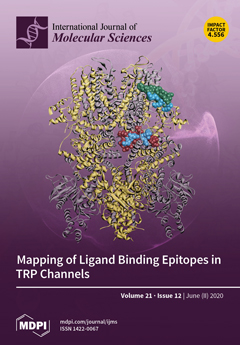To elucidate the molecular mechanism of juvenility and annual flowering of fruit trees,
FLOWERING LOCUS C (
FLC), an integrator of flowering signals, was investigated in apple as a model. We performed sequence and expression analyses and transgenic experiments related to juvenility
[...] Read more.
To elucidate the molecular mechanism of juvenility and annual flowering of fruit trees,
FLOWERING LOCUS C (
FLC), an integrator of flowering signals, was investigated in apple as a model. We performed sequence and expression analyses and transgenic experiments related to juvenility with annual flowering to characterize the apple
FLC homologs
MdFLC. The phylogenetic tree analysis, which included other MADS-box genes, showed that both MdFLC1 and MdFLC3 belong to the same FLC group. MdFLC1c from one of the
MdFLC1 splice variants and MdFLC3 contain the four conserved motives of an MIKC-type MADS protein. The mRNA of variants
MdFLC1a and
MdFLC1b contain intron sequences, and their deduced amino acid sequences lack K- and C-domains. The expression levels of
MdFLC1a,
MdFLC1b, and
MdFLC1c decreased during the flowering induction period in a seasonal expression pattern in the adult trees, whereas the expression level of
MdFLC3 did not decrease during that period. This suggests that
MdFLC1 is involved in flowering induction in the annual growth cycle of adult trees. In apple seedlings, because phase change can be observed in individuals, seedlings can be used for analysis of expression during phase transition. The expression levels of
MdFLC1b,
MdFLC1c, and
MdFLC3 were high during the juvenile phase and low during the transitional and adult phases. Because the expression pattern of
MdFLC3 suggests that it plays a specific role in juvenility,
MdFLC3 was subjected to functional analysis by transformation of
Arabidopsis. The results revealed the function of
MdFLC3 as a floral repressor. In addition,
MdFT had CArG box-like sequences, putative targets for the suppression of flowering by MdFLC binding, in the introns and promoter regions. These results indicate that apple homologs of FLC, which might play a role upstream of the flowering signals, could be involved in juvenility as well as in annual flowering. Apples with sufficient genome-related information are useful as a model for studying phenomena unique to woody plants such as juvenility and annual flowering.
Full article






